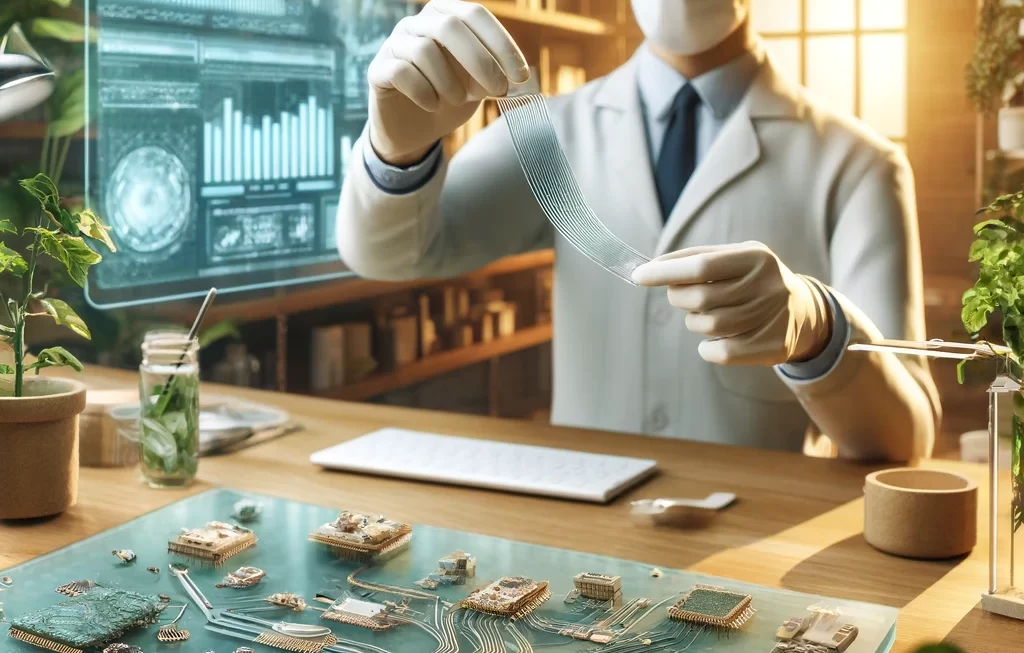In the rapidly evolving world of technology, we continually push boundaries to innovate and create more efficient, powerful, and sustainable solutions. One of the most promising advancements in this field is the development of biodegradable electronics. As an IT guy, I am excited to explore this revolutionary technology and its potential environmental benefits. Let’s dive into the world of biodegradable electronics, understanding their technology, benefits, and practical applications in simple terms.
Understanding Biodegradable Electronics
Biodegradable electronics are electronic devices designed to naturally decompose in the environment after their useful life has ended. Unlike traditional electronics, which can take hundreds of years to break down and often release harmful substances, biodegradable electronics are made from materials that can be safely absorbed by the environment.
How Do They Work?
The key to biodegradable electronics lies in their materials. These devices are typically made from organic materials like cellulose (a component of plant cell walls), silk proteins, and biodegradable polymers. These materials are engineered to perform electronic functions while being environmentally friendly.
For instance, a biodegradable circuit might use magnesium conductors, silk-based substrates, and biodegradable polymers as insulating materials. Once the device is no longer needed, it can be safely disposed of, where it will naturally break down into harmless substances.
Environmental Benefits
The environmental benefits of biodegradable electronics are significant:
- Reduced Electronic Waste: Traditional electronic waste (e-waste) is a growing environmental problem, with millions of tons of waste generated each year. Biodegradable electronics can significantly reduce the volume of e-waste.
- Lower Toxicity: Many conventional electronics contain hazardous materials like lead, mercury, and cadmium. Biodegradable electronics use safer materials, reducing the risk of toxic exposure to both humans and the environment.
- Resource Conservation: By using renewable materials, biodegradable electronics help conserve finite resources like metals and rare earth elements, which are commonly used in traditional electronics.
Practical Examples
Several innovative examples of biodegradable electronics are already in development:
Biodegradable Sensors
Researchers have created biodegradable sensors that can monitor environmental conditions. These sensors can be used in agriculture to monitor soil health and decompose harmlessly once their job is done, leaving no trace.
Temporary Medical Devices
In the medical field, biodegradable electronics are being used to develop temporary medical devices. For example, biodegradable electronic implants can monitor healing processes or deliver medications and then safely dissolve in the body, eliminating the need for surgical removal.
Eco-friendly Packaging
Some companies are exploring biodegradable electronic tags for packaging. These tags can help track products through the supply chain and then degrade, reducing waste and environmental impact.
Encouraging Further Exploration
The field of biodegradable electronics is still in its early stages, but it holds tremendous promise. For those interested in exploring this topic further, here are a few resources and references:
- Journals and Research Papers: Look for publications in journals like “Advanced Materials” and “Nature Electronics” for the latest research on biodegradable electronics.
- University Programs: Many universities are conducting cutting-edge research in this field. Explore programs and research labs at institutions like MIT, Stanford, and the University of Illinois.
- Industry Reports: Stay updated with industry trends by reading reports from organizations like the International Electronics Manufacturing Initiative (iNEMI) and the Consumer Technology Association (CTA).
Conclusion
Biodegradable electronics represent a significant step forward in making technology more sustainable and environmentally friendly. As we continue to innovate and push the boundaries of what is possible, it is crucial to consider the environmental impact of our advancements. By embracing biodegradable electronics, we can create a future where technology and nature coexist harmoniously.
For those in the field of computer science and electronics, this is an exciting area to explore and contribute to. The journey towards a more sustainable future is just beginning, and your expertise can play a pivotal role in shaping it.
Feel free to share your thoughts or ask questions in the comments section below. Let’s collaborate to make our world a better place through innovative and sustainable technology.
References:
- Hwang, S.-W., et al. (2013). “A Physically Transient Form of Silicon Electronics.” Science, 337(6102), 1640-1644.
- Rogers, J.A., & Someya, T. (2014). “Materials and Mechanics for Stretchable Electronics.” Science, 347(6227).
- Tao, H., et al. (2014). “Silk-based resorbable electronic devices for remotely controlled therapy and in vivo infection sensing.” PNAS, 111(49), 17385-17389.
By understanding and supporting the development of biodegradable electronics, we can all contribute to a more sustainable and eco-friendly technological future.




